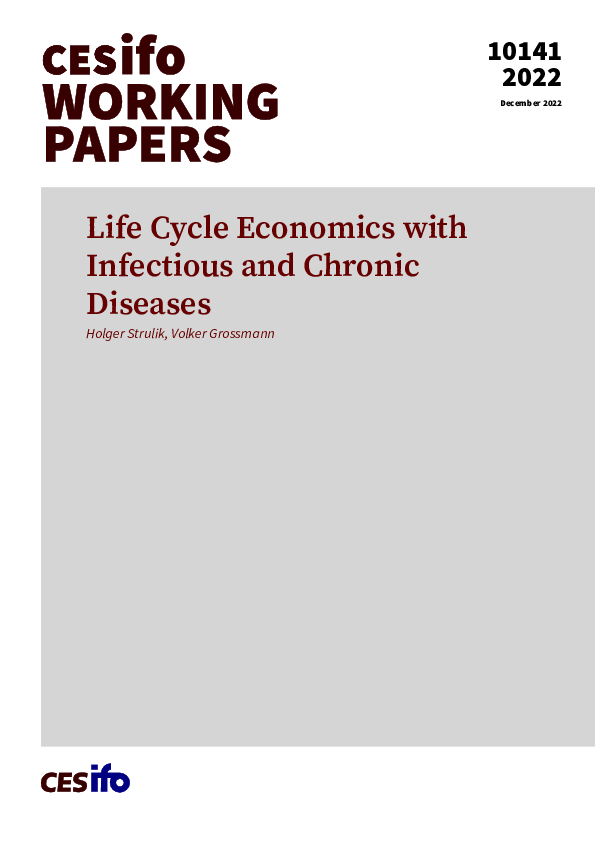Life Cycle Economics with Infectious and Chronic Diseases
CESifo, Munich, 2022
CESifo Working Paper No. 10141

In this paper, we develop a life cycle model in which health and longevity are threatened by infectious and chronic diseases. The model captures that the susceptibility and severity of infectious diseases depend on the accumulated health deficits (immunosenescence) and that the life history of infections affects the accumulation of chronic health deficits (inammaging). Individuals invest in their health to slow down health deficit accumulation and take measures to protect themselves from infectious diseases. We calibrate the model for an average American and explore how health expenditure, life expectancy, and the value of life depend on individual characteristics, medical technology, and the disease environment. We then use counterfactual computational experiments of the U.S. epidemiological transition 1860-2010 to show that the decline of infectious diseases caused a substantial decline of chronic diseases and contributed more to increasing life expectancy than advances in the treatment of chronic diseases. Finally, we use the model to investigate behaviour and long-term health outcomes in response to the Covid-19 pandemic. We predict that the pandemic will shorten the life expectancy of middle-aged people almost as much as that of older people because of inammaging and the self-productivity of health deficits.
Social Protection
Empirical and Theoretical Methods